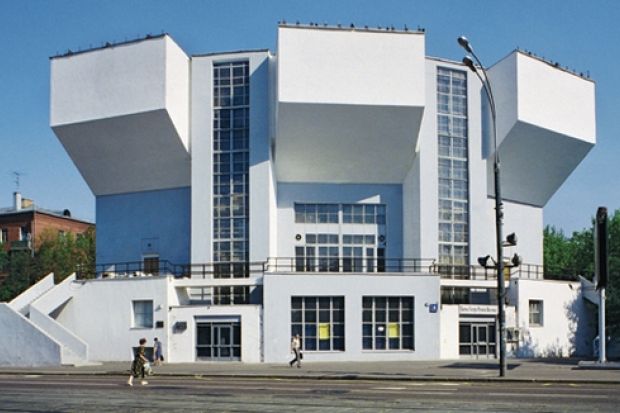Building the Revolution: Soviet Art and Architecture, 1915-1935
Royal Academy of Arts, London 29 October to 22 January 2012
The paintings of Liubov Popova - all bright and jagged interlocking geometric shapes - have titles such as Painterly Architectonics and Spatial Force Construction. Like many of her fellow Constructivists, she actively sought to apply their artistic ideals to architecture and engineering. And for a brief period, early Soviet architecture did indeed operate on classic international Modernist principles - until the dead hand of Stalinist Socialist Realism signalled halt. The grim red granite of the Lenin Mausoleum, completed in 1930, marks an era of exuberance and experimentation coming to a close.
This exhibition at the Royal Academy aims to explore a comparatively neglected period of art and architecture, and the tight links between them, by bringing together three separate strands. The art comes from the State Museum of Contemporary Art in Thessaloniki and, along with completed works, includes studies for three-dimensional constructions; designs for propaganda kiosks and loudspeakers; sketches for stage sets, monuments that were never executed and Kazimir Malevich's "architectons" (white Suprematist models of imaginary buildings). Much of this is comparatively uninteresting in itself, except when placed in dialogue with photographs of the contemporary architecture.
Some come from the Shchusev State Museum of Architecture in Moscow and show the factories, apartment blocks, workers' clubs and palaces of culture either in the process of construction - often with the most rudimentary wooden scaffolding and materials arriving by horse and cart - or as part of the surrounding cityscape. These are all small black-and-white prints, still attached to the cards that classify them in the Moscow museum, and have rather more impact in the catalogue than they have on display. Accompanying them are the huge colour pictures of the same buildings that photographer Richard Pare has been taking since 1995, when he set out to capture the great surviving Modernist architecture of Russia.
All this makes for a rather complicated argument. As well as celebrating a particular artistic moment and drawing out parallels between media, Building the Revolution also turns out to be about heritage. An image with a diver suspended in mid-air above the swimming pool at the Dynamo Sports Club in Kiev is juxtaposed with one of the pool derelict and deserted. Pare's marvellous photographs vividly capture the bold and elegantly functional facades, the swooping ramps and staircases, the vast temples of textile production or hydroelectric power. Yet he also shows us the peeling balconies; the overgrown roof garden, which was never finished; the empty but starkly beautiful white water tower now lost like a Modernist dream amid the scrubland. The pathos comes both from what happened to the brief moment of optimism the architecture of the 1920s conjured up and from its neglect even by the planners of post-communist Russia.
Register to continue
Why register?
- Registration is free and only takes a moment
- Once registered, you can read 3 articles a month
- Sign up for our newsletter
Subscribe
Or subscribe for unlimited access to:
- Unlimited access to news, views, insights & reviews
- Digital editions
- Digital access to THE’s university and college rankings analysis
Already registered or a current subscriber? Login
